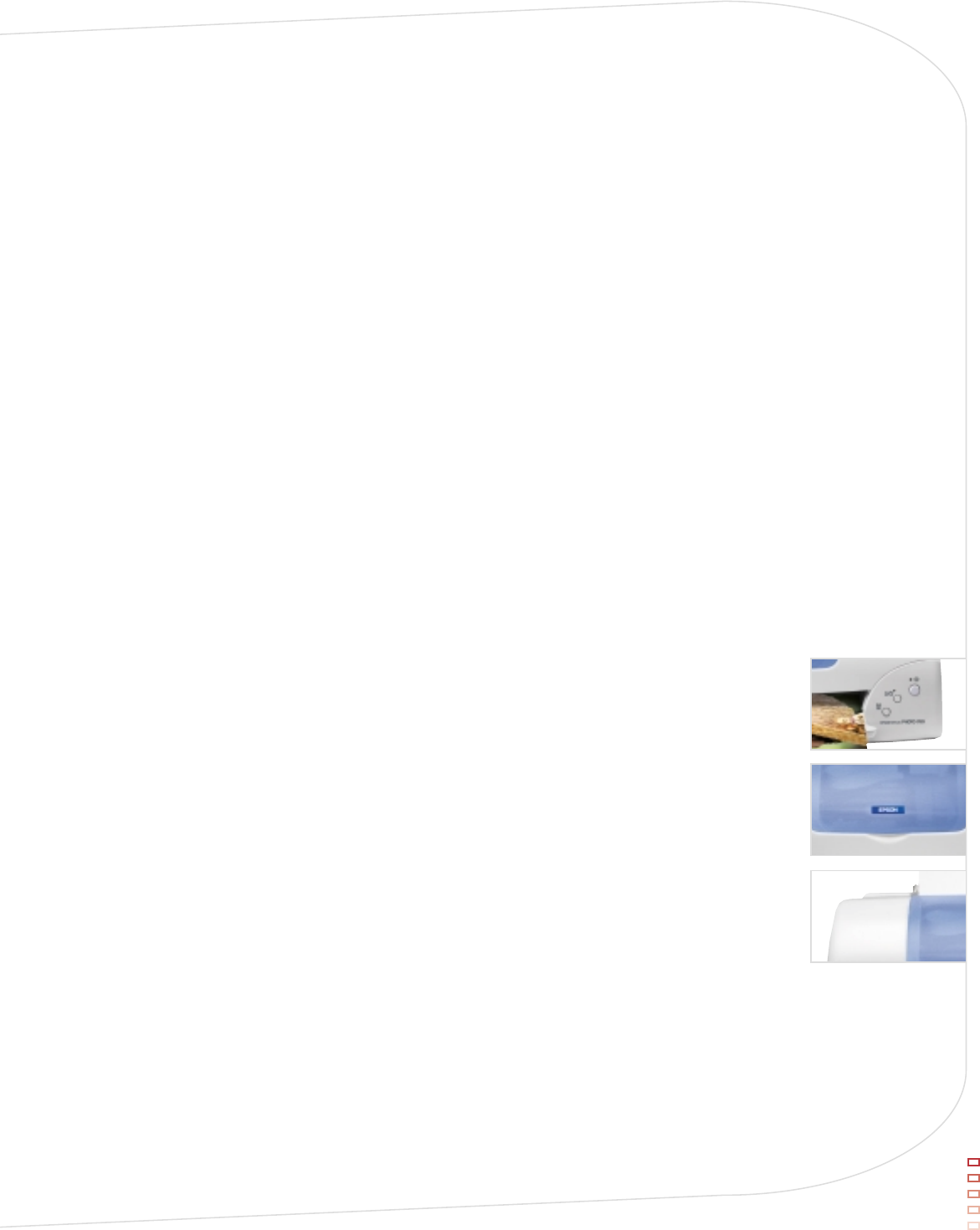
What is the
difference between
the EPSON Stylus
Photo 780, the
EPSON Stylus
Color 3000 and
the EPSON Stylus
Color 980?
How does the
EPSON Stylus
Photo 780
compare to the
EPSON Stylus
Photo 890?
What makes the
EPSON Stylus
Photo 780 better
than other printers
on the market?
What applications
can be produced
with the EPSON
Stylus Photo 780?
■
Text Documents
■
Reports
■
Brochures
■
Flyers
■
Greeting Cards
■
Photo Reprints
■
Photo Enlargements
■
APS format prints – extra long or panoramas
■
Crafts
■
Creative Scrapbooks
■
Promotional materials
■
Photo Contest submissions
■
Prints for framing
■
Prints for photo albums
• • • • • • • • • • • • • • • • • • • • • • • • • • • • • • • • • • • • • • • • • • • • • • • • • • • • • • • • • • • • • • • • • • • • • • • • • • • • • • • • • • • • • • • • • • • • • • • • • • • • • • • • • • • • • • • • • • • • • • • • • • • • • • • • • • • • • • • • • • • • • • • • • • • • • • • • • • • • • • • • • • • • • • • • • • • • • • • •
3
All three of these printers target specific markets and have different features and pricing appropriate
for those differences. The EPSON Stylus Color 980 is a small format printer offering office professionals
the ultimate in text and color speed for daily business report and graphics. It yields 2880 x 720 dpi,
variable droplets with 4 ink colors (CMYK) for great detail for text and color images. The EPSON Stylus
Color 3000 prints as wide as 16.5" and is great for graphic artists who need to print comps or architects
and designers doing CAD/CAM. It offers 1440 x 720 dpi, a larger fixed droplet (20+ picoliters) and
uses a 4 ink pallete as well. The EPSON Stylus Photo 780, in comparison, is designed as a desktop
tool for optimal photo printing. Its image quality is Epson’s absolute best, offering 2880 x 720 dpi,
using 4 picoliter droplets with a 50% larger 6-color ink palette. It has a printable area of 8.5" x 44,"
slightly larger than the EPSON Stylus Color 980, and it also offers the first ever True BorderFree photos.
For larger sized prints, users should consider the EPSON Stylus Photo 1280 or the EPSON Stylus
Color 3000 (offers comparably lower gradation quality).
The EPSON Stylus Photo 780 is just as fast and image capable as the other EPSON Stylus Photo
printers, but it is priced lower. The EPSON Stylus Photo 780 supports BorderFree printing on 4" x 6,"
5" x 7," and letter, plus additional support for 8" x 10," which the EPSON Stylus Photo 890 does not
support. However, the EPSON Stylus Photo 780 does not offer the roll paper printing available on
the 890 model.
It’s simple. Epson print technology is superior. Our Micro Piezo print head controls the dots put on
the page with much more accuracy than conventional thermal technology, and without destroying the
print head. Micro Piezo produces very small, perfectly round dots every time, with no misting or
splatter. It also guarantees consistent print quality print after print because the print head does not
get worn down. In comparison, thermal printers require that the print heads be replaced frequently.
This can add additional cost and inconvenience to the user. With smaller variable dots, Epson printers
generally can put down more dots for even more detail. Furthermore, Epson ink jets all
offer quick-drying inks and true black ink for text and photographs, not composite blacks
like other Hewlett Packard
®
or Lexmark
®
photo printers, for better detail and color control
in the shadow areas of a photograph. By using three variable ink droplets and 6-color
Photo Inks, the EPSON Stylus Photo 780 printer provides superior gradation quality, better
skin tones, “unvisible” dots and more levels of tone than many other ink jets can produce.
All this makes the EPSON Stylus Photo 780 the only true Photo Quality solution for digital
photo printing. Bottom line: better technology, better images.
e
o
e
a
s
.e.
r
m
e
ll as everyday text
olor photographically
onally ranked photo
ng to explore the
ditional photos, but it
d duplicates. It even
ng cards and flyers.
ree photo printing,
without borders,
software suite, and








